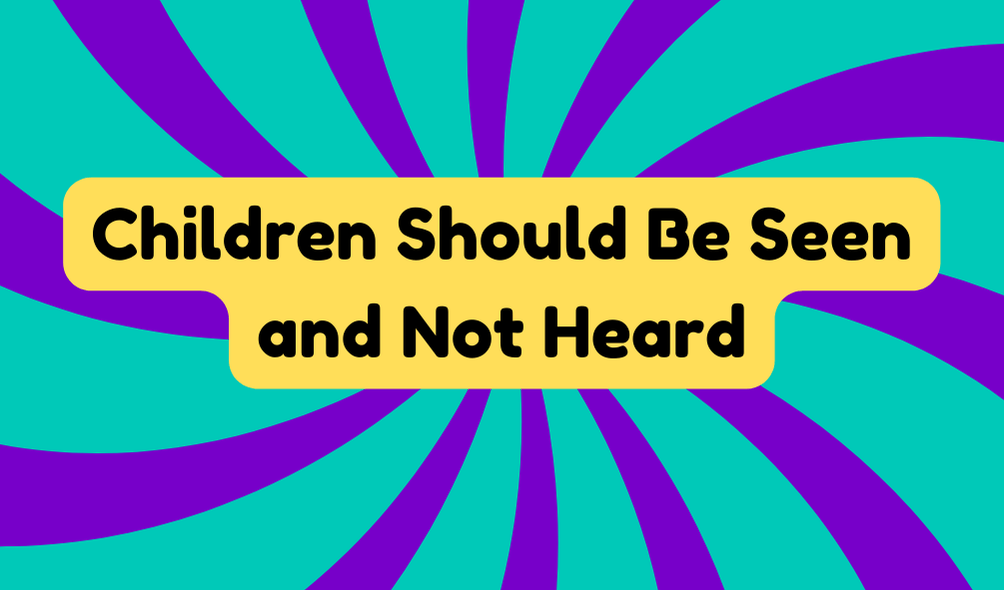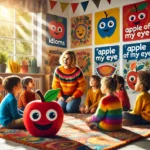The phrase "children should be seen and not heard" reflects an outdated viewpoint that emphasizes children's silence over their contributions. This perspective prioritizes quiet compliance and disregards the valuable insights children can offer. Such attitudes can lead to parenting challenges and reinforce stereotypes about childhood behavior. In today's society, the call for inclusive environments that encourage children's participation is gaining traction, suggesting a shift away from traditional norms. Further exploration reveals more about the evolving views on children's roles and voices.
Synonyms
Synonyms for the phrase "children should be seen and not heard" reflect the underlying theme of silence and the perceived value of children's contributions in various contexts. This notion emphasizes a silent presence and expected obedience from the younger generation. The implications of such phrases can be critically examined through various constructs:
- Quiet compliance
- Muted observation
- Disregarded voices
These synonyms reveal a societal tendency to prioritize silence over active participation, reinforcing an outdated paradigm. As modern perspectives evolve, understanding the implications of these phrases can foster an environment that values children's insights, encouraging their voices rather than relegating them to the background.
Example of Sentences
Many would agree that the phrase "children should be seen and not heard" exemplifies a traditional attitude towards the role of children in society. This perspective often leads to various parenting challenges and reflects outdated societal expectations. For instance, consider the implications of this phrase:
- Diminishing children's voices in discussions.
- Prioritizing adult authority over youthful expression.
- Reinforcing stereotypes about childhood behavior.
Such attitudes can foster environments where children's opinions are undervalued. By embracing a more inclusive approach, families could navigate parenting challenges while fostering valuable communication and critical thinking skills essential for today's dynamic world.
Origin
The phrase "children should be seen and not heard" has its roots in a historical context that suggests a limited view of children's roles in society. This old English proverb, originating in the 15th century, reflects an era when children's opinions were undervalued, paralleling societal norms that favored silence. Remarkably, cultural variations exist, illustrating how different societies interpret the significance of children's voices. While the phrase may seem antiquated today, its implications echo through generations, revealing ingrained attitudes about childhood and behavior. Ultimately, it serves as a reminder of the evolving perceptions surrounding children's roles in familial and societal structures.
Collocations
While the saying "children should be seen and not heard" emphasizes the visual presence of children over their spoken contributions, its collocations reveal deeper societal implications. This phrase often correlates with:
- Restricted expression: Suggesting that child behavior should fit certain norms.
- Limited participation: Indicating children's voices are undervalued in discussions.
- Cultural expectations: Highlighting a societal norm that prioritizes silence over speech.
Such associations reflect a critical view of children's roles, questioning how societal norms shape perceptions of youth. This perspective urges reflection on promoting a more inclusive environment where children's voices contribute meaningfully to conversations.
How to Use in Everyday Language
Utilizing the phrase "children should be seen and not heard" can evoke strong reactions and raise questions about its relevance in contemporary discussions around childhood. In today's diverse communication styles, parents and educators need to reconsider the implications of this saying. By addressing child behavior with openness, adults can foster an environment where children's voices are valued. This challenges traditional notions of silence, emphasizing the importance of active participation. Integrating this understanding into everyday language encourages dialogue about respect and empowerment, steering away from outdated beliefs. Ultimately, acknowledging children's perspectives enriches relationships, paving the way for innovative child development practices.
Why Is It Still Relevant Today?
In examining the phrase "children should be seen and not heard," it becomes apparent that its relevance persists in modern society, despite evolving views on child empowerment and communication. Parental expectations and societal norms often still hint at the belief children should maintain silence. This results in a tension between emerging progressive values and traditional views. The table below illustrates competing perspectives:
| Perspective | Current Practice | Future Vision |
|---|---|---|
| Silent Child | Expected to listen | Encouraged to express |
| Parental Authority | Dominant voice | Collaborative dialogue |
| Cultural Norms | Restrain children's voices | Embrace their insights |
| Historical Context | Longstanding tradition | Progressive inclusivity |
| Impact on Development | Limited communication | Enhanced emotional growth |







